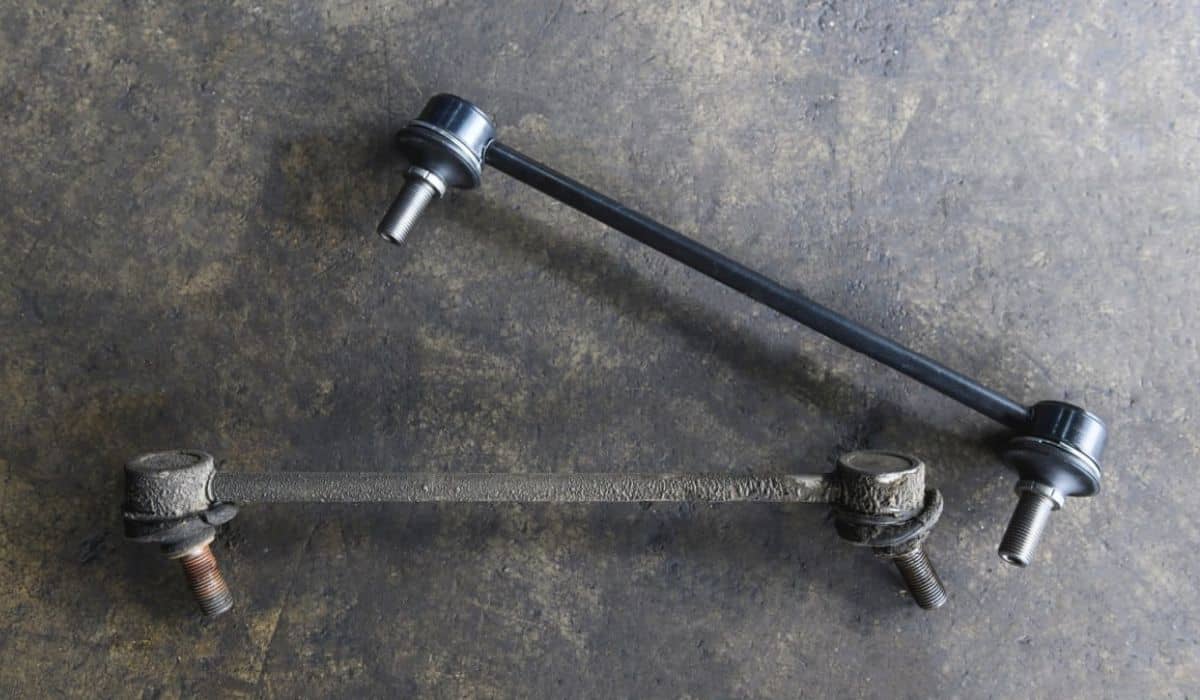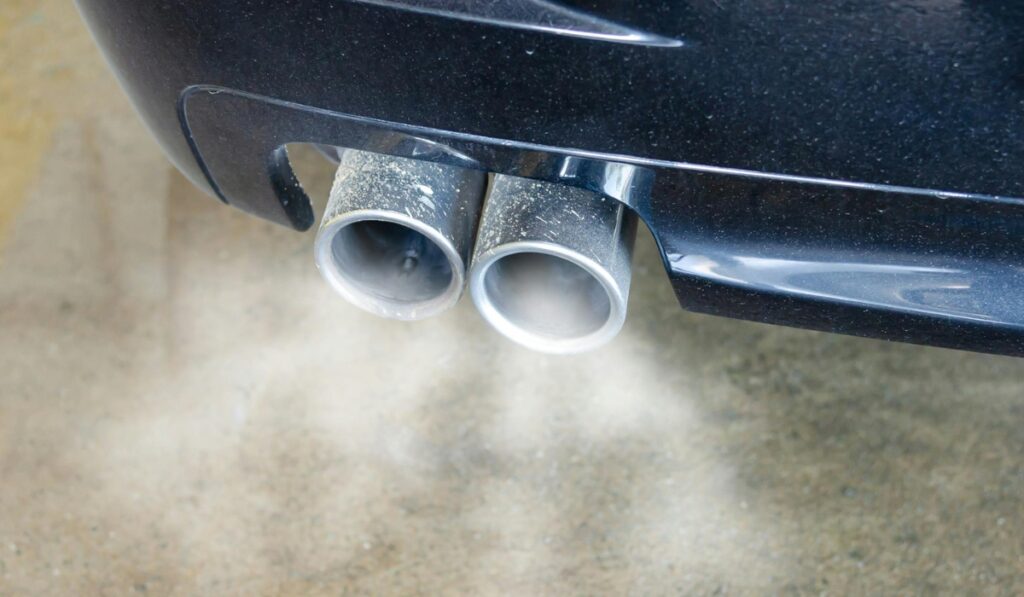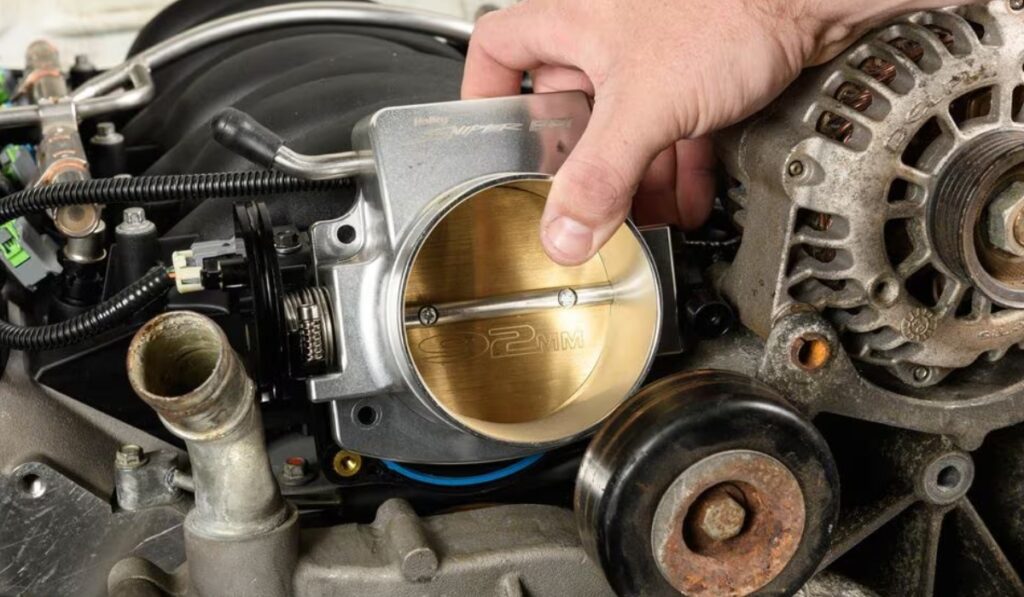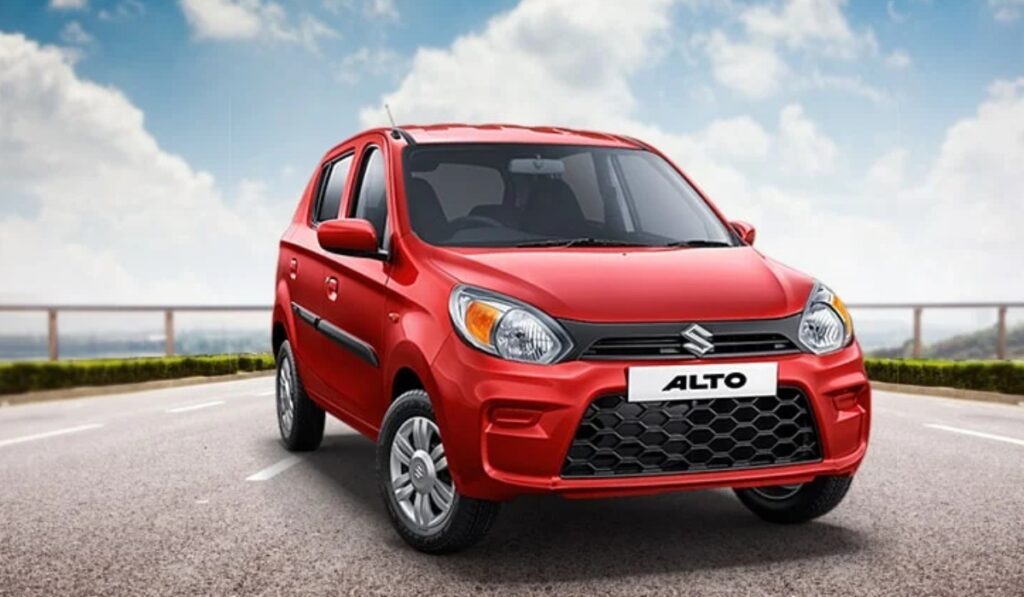Sway bar links are essential to car suspension. These little but crucial pieces stabilise your automobile, especially in curves and rocky terrain.
A damaged or worn-out sway bar link can cause steering troubles, tyre wear and accidents. Unfortunately, many drivers are ignorant of the signs of a damaged sway bar connection, which can pose major road safety risks.
What is a Sway Bar Link?
Before we discuss symptoms, let’s define a sway bar connection. Picture this: Many parts of your car’s suspension system work together to give stability and control, like a well-orchestrated dance.
One component is the sway bar, sometimes called the stabiliser or anti-roll bar. The sway bar links your car’s suspension’s left and right sides. It transfers weight to reduce body roll when cornering. This improves traction and handling by keeping all four wheels on the road.
Let’s find out what are various Bad sway bar link symptoms.
| Symptom | Description |
|---|---|
| Clunking noise | A loud noise coming from the front or rear of the vehicle, especially when driving over bumps or uneven roads. |
| Vehicle swaying | Excessive side-to-side movement or rolling of the vehicle while making turns or navigating curves. |
| Uneven tire wear | Uneven wear patterns on the tires, typically on the outer or inner edges, indicating improper suspension alignment. |
| Loose handling | Feeling of a loose or unstable steering, making it difficult to control the vehicle. |
| Vibrations | Vibrations felt in the steering wheel or through the chassis, especially at higher speeds. |
| Tires squealing during turns | Tires making screeching or squealing sounds when making turns, indicating insufficient stability. |
| Reduced traction | Decreased grip and traction while driving, especially noticeable during cornering or sudden maneuvers. |
| Leaning during turns | Excessive leaning or tilting of the vehicle while making turns, affecting its stability. |
Rattling or clunking
A worn or broken sway bar link may cause front-end clunking or rattling. The suspension-sway bar link stabilises the vehicle during turns. Worn or broken links might loosen and generate noise as the sway bar travels.
This can also make the car seem loose or unstable during turns. Check and replace your sway bar link if you detect a problem to guarantee safe and dependable vehicle operation.
Uneven tyre wear
Uneven tyre wear is often overlooked when steering problems arise. Many things can cause this, including poor sway bar link symptoms. The sway bar link connects the sway bar to the control arms to stabilise the vehicle during turns.
Wear or damage to the sway bar link can cause excessive movement and uneven tyre wear. Front tyres are usually worn the most.
To determine the reason of uneven tyre wear and prevent additional damage to your tyres and suspension system, have a technician inspect your car.
Steering or handling issues
A faulty sway bar link often causes steering or handling issues. Sway bars are connected to car suspension systems by sway bar links. A worn or broken sway bar link can loosen the bar, causing loss of control and an unstable ride. This can make steering or handling difficult, especially on bumpy roads or when turning.
The steering wheel may feel loose or the car may shake or tilt excessively during turns. To avoid further damage or road dangers, have a trained mechanic evaluate your car immediately if you observe any of these signs.
Wobbling or vibrations
A faulty sway bar link often causes vibrations or shaking. A broken or worn-out sway bar link can’t stabilise the vehicle’s suspension. This can cause excessive wheel and suspension movement, creating steering wheel and vehicle vibrations.
A rattling or clunking sounds may accompany these vibrations at low or high speeds. This symptom can compromise vehicle handling and safety, thus it must be addressed immediately.
A competent mechanic should examine your sway bar link if you feel vibrations or wobbling while driving.
Sway bar bushing leaks or damage
Sway bar bushings are crucial to car suspension. They link the sway bar to the automobile frame and stabilise it when driving. A broken or leaking sway bar bushing can cause steering issues that make driving uncomfortable and risky.
Poor sway bar bushings can cause clunking noises over bumps, excessive body roll while turning and uneven tyre wear.
A trained technician should evaluate your car immediately if you observe any of these signs. Avoiding these indications might lead to more serious issues like steering control loss or suspension system failure, which can be costly to fix.
Leaning when turning
When turning, a faulty sway bar connection causes swaying or tilting. Sway bar link failure affects vehicle stability and handling, especially while turning. The suspension system’s sway bar, or anti-roll bar, prevents excessive tilting during corners.
The control arm and sway bar link connect, but if it wears or breaks, the bar might disengage, causing the vehicle to sway or lean excessively when turning.
This may make driving uncomfortable and unsafe by affecting the vehicle’s stability and control when turning. Have a repair check your car for swaying or tilting when turning to see whether the sway bar link is the cause.
Unusual tyre movement
Bad sway bar links can cause anomalous tyre movement, especially during corners. Sway bar links that are worn or broken cannot stabilise the suspension. This might cause severe body roll, tilting and shifting tyres during corners. When turning sharply, your car may feel less stable or the tyres may scream or screech.
Driving with worn sway bar links can harm your suspension system and endanger your safety, so fix this issue immediately. A trained mechanic should evaluate your car immediately if you believe damaged sway bar links are causing abnormal tyre movement.
Braking dip or rocking
During braking, a faulty sway bar link may dip or shake. A defective sway bar link may increase vehicle body roll. When you stop, the vehicle’s weight slides forward and compresses the front suspension.
A malfunctioning sway bar won’t prevent excessive body roll during this operation. Thus, the car will dip or rock, making braking difficult. Get your car evaluated by a professional if you notice this risky symptom.
Uneven roadways reduce stability
Bad sway bar linkages reduce stability on uneven roadways. Vehicle suspension systems depend on sway bar links to connect the sway bar to the suspension.
Sway bar links that wear out or break can cause the bar to move excessively and compromise vehicle stability on uneven surfaces. It may swing or rock when cornering or driving on difficult surfaces.
It can also make the car less stable and harder to operate. If you detect diminished stability on uneven roads or other indicators of damaged sway bar links, get them examined and replaced immediately to maintain vehicle safety and performance.
More body roll or sway
A faulty sway bar connection often causes increased body roll or sway. Sway bars, also known as stabiliser bars, are vital to a vehicle’s suspension system. It reduces turning body roll and sway. Damaged or worn sway bar links might render the bar useless. This increases body roll or sway, making your car less stable and harder to manage.
This is a severe safety issue since it can impair steering and manoeuvring, especially at high speeds or in emergencies. A trained mechanic should evaluate your car immediately if you observe significant body roll or wobble while driving to discover the reason and required repairs.
Maintenance benefits of addressing bad sway bar link issues.
| Maintenance | Benefits |
|---|---|
| Sway bar link replacement | Restores proper suspension function and stability. Eliminates clunking noises and vibrations. Improves vehicle handling and control. |
| Suspension inspection and alignment | Ensures proper alignment of the tires, preventing uneven wear.Increases tire lifespan and improves fuel efficiency. Reduces the risk of accidents due to unstable handling. |
| Greasing and lubrication | Reduces friction and wear on the sway bar link components. Enhances the longevity of the suspension system. Maintains smooth and quiet operation of the vehicle. |
| Regular maintenance checks | Allows for early detection and timely repair of sway bar link issues.Prevents further damage to other suspension components. |
| Professional inspection | Saves costs by addressing problems before they escalate. |
Causes of Bad Sway Bar Link Symptoms
The culprit for faulty sway bar connection symptoms! Let’s investigate these symptoms’ causes.
· Time-related wear :
Like age-related wrinkles, our sway bar linkages wear out. These suspension system components can be damaged by driving’s continual movement, vibrations, and stress. They may loosen, wear out, or shatter.
· Hard Road Conditions :
Imagine driving on a pothole-filled, bumpy road. Imagine an action-packed adventure movie for your suspension system! Unfortunately, this difficult terrain can strain sway bar linkages. Extreme road conditions might exacerbate degradation and cause sway bar link problems.
· Without Regular Upkeep :
You know how skipping workouts may make you lethargic and out of shape? Guess what? Sway bar links need love too! Poor maintenance might cause sway bar link issues. A trained technician can evaluate your vehicle regularly to detect concerns early and avoid additional harm.
· Bad Installation :
Remember trying to assemble that complex piece of furniture without instructions? It didn’t go well. Installing sway bar links incorrectly might cause issues later. They may not work well or be tightened to the manufacturer’s standards, causing severe sway bar link symptoms.
FAQ
1. What is a sway bar link and why does it affect vehicle dynamics?
Vehicle stability and handling depend on the sway bar link, also known as the stabiliser bar link or anti-roll bar link. The sway bar connects to the suspension system to distribute weight and balance the automobile, especially in turns.
This keeps the car level and grounded, improving safety. A working sway bar connection reduces body roll, eliminating uncomfortable motions at high speeds or over rough terrain.
Sway bar links maintain balance, therefore a broken one might affect ride comfort and vehicle response.
2. What signs indicate a sway bar link failure?
Sway bar link failure must be identified for safety. The front or back of the car typically clunks or rattles as the link wears down, especially over bumps or during turning.
A broken link affects the vehicle’s balance, making it less responsive, especially while cornering. Unbalanced vehicles may wear tyres unevenly owing to weight distribution. A quick visual check might show broken links or worn rubber bushings.
3. How can a defective sway bar link influence vehicle safety?
A broken sway bar link affects vehicle stability. With a weakened sway bar, the vehicle is more likely to body roll, especially in curves or strong crosswinds.
In SUVs and other higher vehicles, this can cause instability and rollovers. A faulty connection can also cause uneven tyre wear, impacting grip and braking. Given these reasons, sway bar link faults must be addressed immediately to ensure vehicle safety.
4. What driving circumstances increase sway bar link wear?
Sway bar links wear out like other car parts. Certain driving circumstances accelerate this degradation. Driving on rocky, uneven terrain or pothole-filled roads can strain the linkages.
Taking sudden manoeuvres at high speeds or hauling big loads might also harm these components. Sway bar links can be found and replaced early with regular inspections, especially following tough driving conditions.
5. How frequently should sway bar links be examined and how expensive is repair?
Sway bar links may be inspected during standard vehicle maintenance or tyre rotations. Sway bar links generally last 50,000 to 100,000 miles, depending on driving behaviours and conditions.
Sway bar link replacement is cheaper than other significant car repairs. The vehicle’s make and model, labour rates, and whether one or both links need replacement affect the pricing. Their importance to vehicle safety and stability makes it a valuable investment.
A faulty sway bar link must be identified to guarantee vehicle safety and performance. Clunks, uneven tyre wear and steering issues are signs. A trained technician should evaluate your automobile if you have any of these bad sway bar link symptoms to establish the cause.
Preventing these difficulties early can avert more significant complications later. Staying knowledgeable about your vehicle’s health may save you time, money, and possible traffic hazards.





